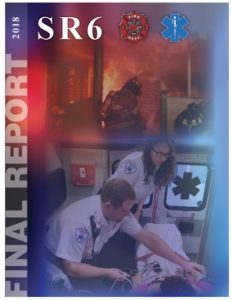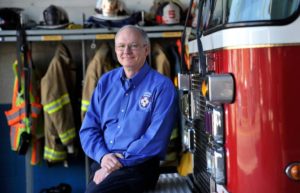The Four-Alarm Fire No One Is Answering.
February 5, 2019
Pennsylvania SR6 Report Reinforces Critical First Responder Funding & Manpower Crisis.
About a year ago, we published a very general-view blog article about the
state of the union for volunteerism in PA. At that time, we didn’t take too deep a dive into the state of the union for financing and manpower challenges that are increasingly becoming a threat to the operation and maintenance of community-based emergency response services.
That was then. This is now.
With the release of the SR-6 Report in December of 2018 from the PA State Assembly
(a joint report from both the Senate and the House), these challenges are nothing less than a looming and impending crisis for emergency response capabilities provided by EMS (emergency response services) and VFD (Volunteer fire departments)

All Pennsylvanians should be aware of what this report contains, and what it means, to municipalities across our great state.
SR6 Presents Both Hard Truths And Harder Solutions.
Fire and EMS
are in a crisis –
right now. Simply put, EMS is woefully lacking in funding -and the number of volunteer firefighters has fallen dramatically over the decades.
These are the very first words of a comprehensive legislative, economic and physical analysis of the state of the union for EMS and VFD’s across our Commonwealth.
The entire report is worthy of every Pennsylvania resident. At the very least, you should consider the introduction on page 7 and the Executive Summary on page 15 to be required reading.
There’s no single reason why so much has changed over time—other than that the times themselves are changing without the political or fiscal will to keep pace with them.
Volunteerism has declined over the last 40 years, in almost direct proportion to the rise in the number of two-income families present in society. First responders are being asked to respond to more types and kinds of emergencies. Communities both rural and urban have been hard pressed to find the additional funds necessary for first responders and volunteer organizations to keep pace with increased demand and the high cost of equipment and maintenance. And the state legislature has spent considerable time addressing and analyzing the problem… rather than acting to directly to help solve it.
Taken separately, the issues outlined in SR6 are a problem. Taken together, they are a crisis very much like a tsunami—a giant wave that’s been generated offshore that is destined to hit sooner or later. Increased call volumes. Staffing shortages, Declining reimbursements. Unfunded mandates. And nearly non-existent fiscal support — all are contributing to this mounting crisis.
SR6 Provides Solutions. Communities Must Provide The Will.
It is important to understand that the SR 6 Report is only that–a report. Nothing improves until specific actions are legislated by state and local government. Things will continue to get worse between now and the time action is taken. – Steve Bair, Fire Director, Alpha Fire Company

Fire Director Steve Bair Centre Daily Times photo)
There are fourteen specific and highly detailed points of action within the State report, ranging from finding new ways to recruit and incentivize volunteers and EMS staff, to new funding and loan sources for departments and communities. A premium is placed on minimizing red tape and maximizing access to information and vital programs that can help our emergency response services sooner rather than later.
And while these have been looming problems gathering momentum for years, the alarm bell is ringing now. When a legislative action comes up for debate, or your community has a fiscal decision to make when it comes to local and regional first response capability, you need to be an informed part of that process.
Stipends For Volunteers Help. An Educated And Active Public Helps More.
Communities need to understand that having the state solve our problems is highly unlikely. We need to put our energy into a long-term strategy that meets our needs and that can be sustained. Our best chance for state assistance may be for the state to remove unfunded mandates and regulatory rules that limit our options in providing municipal services. – Steve Bair, Fire Director, Alpha Fire Company
The vast majority of volunteer firefighters and EMS responders receive a very small annual stipend for their incredible contribution to the community—less than $1,000 a year for what can average 10-15 hours of work per week annually; in all types of conditions, facing all kinds of challenges, protecting and serving the communities they love.
One of the solutions Alpha Fire Company is working toward is a reasonable, gradual increase of the firefighter annual stipend to better approximate that value as a true part time job. Working with the Centre Region Council of Governments in conjunction with state and federal agencies, we’re trying to responsibly incentivize our volunteer community protectors while minimizing the additional tax burden such duty requires.
It’s a lot of work, and there’s much that the general public doesn’t understand that they’re going to need to learn, and learn fast. The same holds true for time-pressed Chiefs and representatives of small companies who are seeing insolvency in their future.
We all have a stake in understanding the issue at hand. If you skipped reading the report above, we urge you to at
least download the SR6 report your device or computer for future reading.
Because it is that important to your community’s future.
 All Pennsylvanians should be aware of what this report contains, and what it means, to municipalities across our great state.
All Pennsylvanians should be aware of what this report contains, and what it means, to municipalities across our great state.
